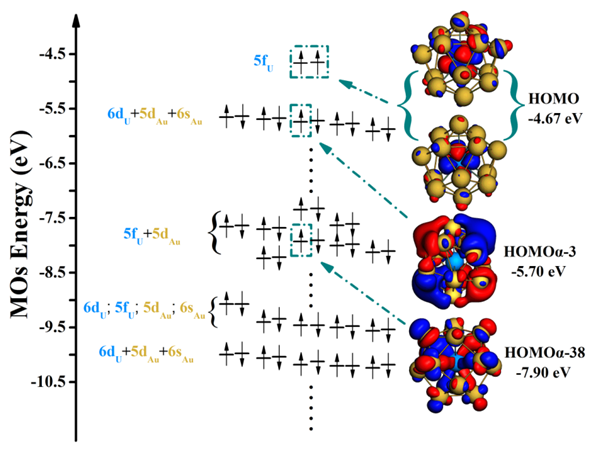Structural and electronic properties of uranium-encapsulated Au14
Gold nanoclusters have a good biocompatibility and low cytotoxicity. Encapsulated metal atoms can stabilize gold nanoclusters as well as change chemical and physical properties with respect to hollow clusters. Based on a typical Au14-cage structure, Prof. Wang and Prof. Zhou designed the uranium-encapsulated structure U@Au14. Relativistic DFT calculations showed that the U atom indeed stabilizes the Au14. Upon encapsulation, charge transfer occurs from Au to U, resulting in a triplet state with two singly-occupied orbitals mainly originating from the 5f shell of U.
An efficient and accurate treatment of relativistic effects, such as the ZORA Hamiltonian in ADF, is necessary to study the electronic properties of systems containing actinides or other heavy elements. Such fundamental theoretical studies of electronic and magnetic properties will help advance the future biomedical application of encapsulated nanoparticles.

Electronic energy level diagram of ground state U@Au14. The occupied MOs contributed from the 5f and 6d electrons of the U atom are listed in the diagram with typical MOs presented on the right.
Y. Gao, X. Dai, S. Kang, C. A. Jimenez-Cruz, M. S. Xin, Y. Meng, J. Han, Z. G. Wang and R. H. Zhou, Structural and electronic properties of uranium-encapsulated Au14 cage. Sci. Rep., 4, 5682 (2014)
Key conceptsADF bonding analysis heavy elements nanoscience Relativistic DFT